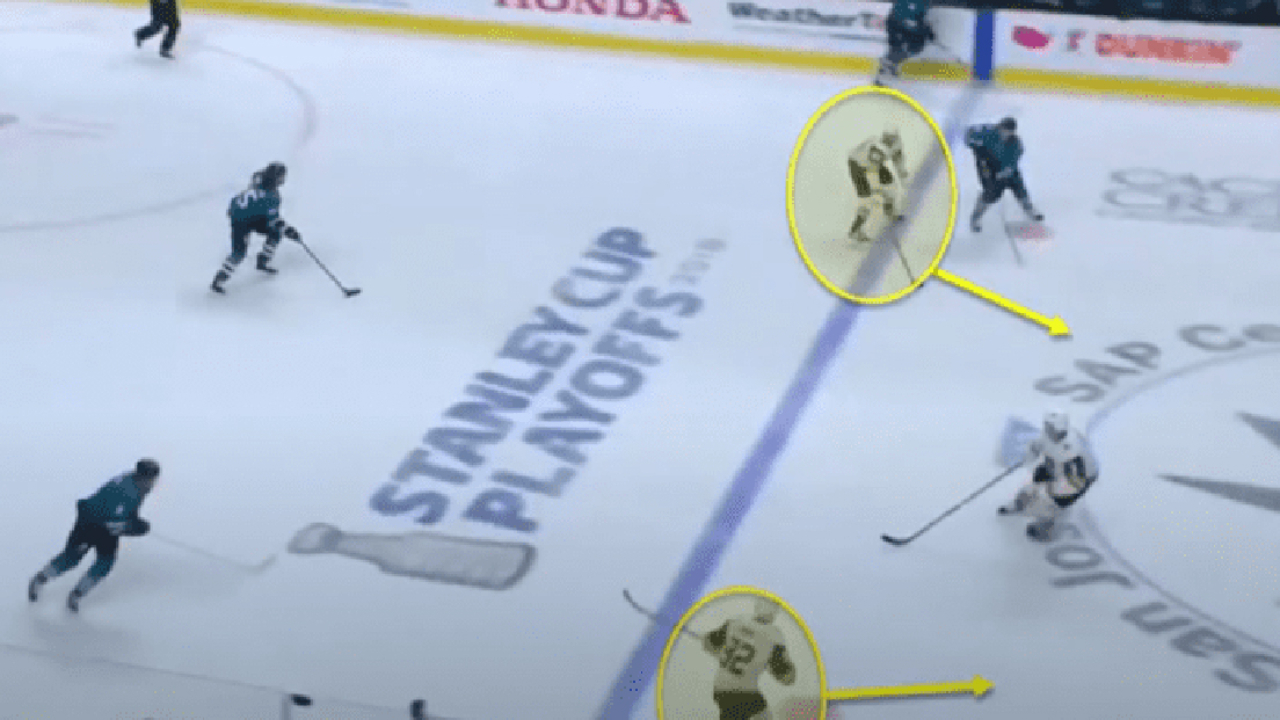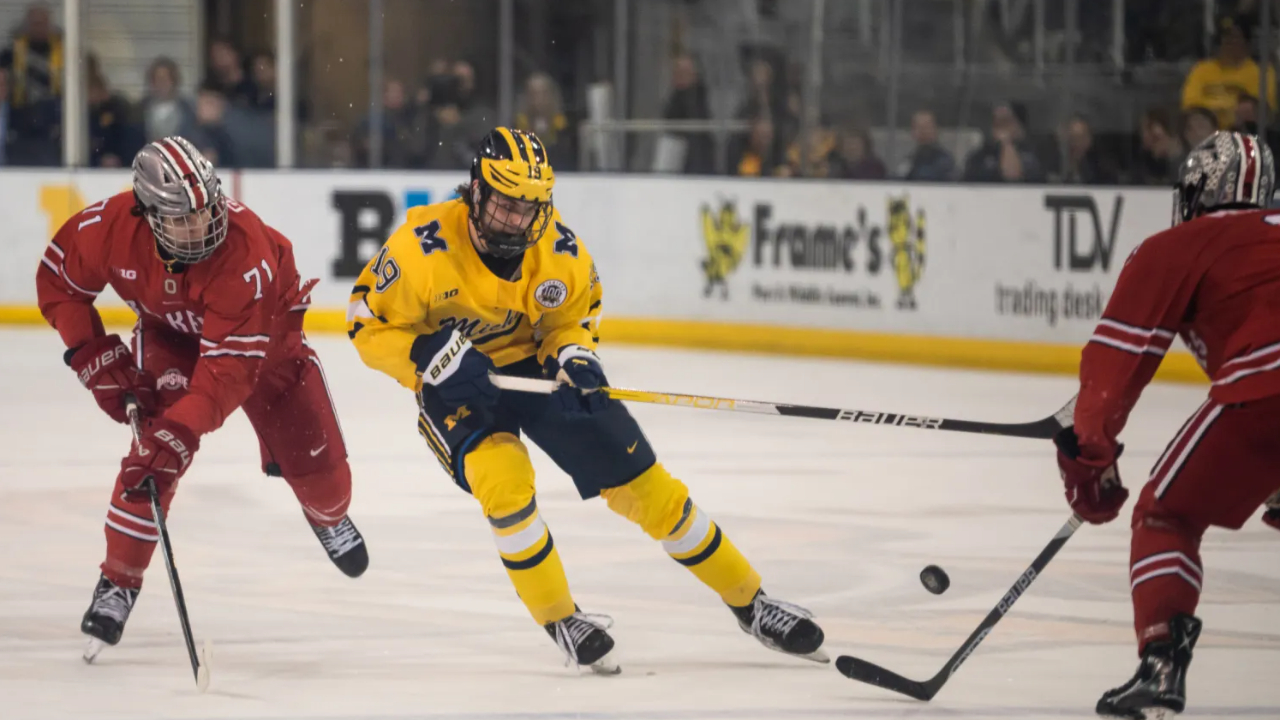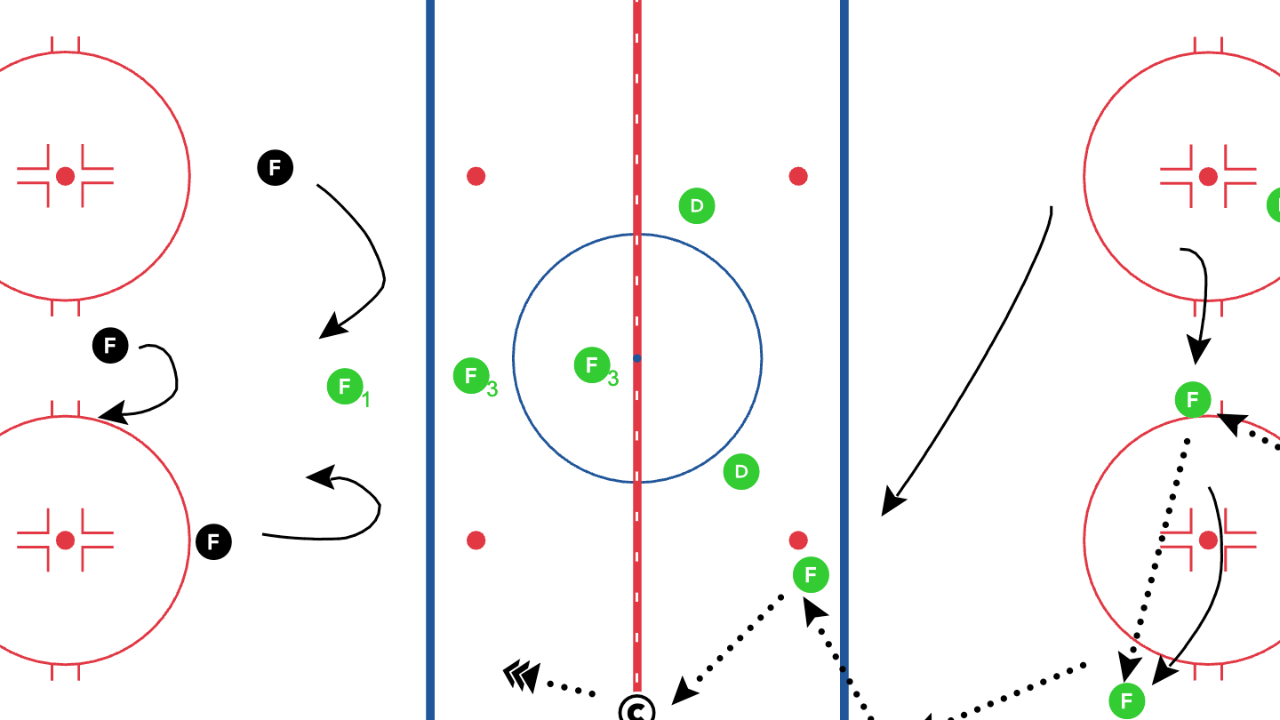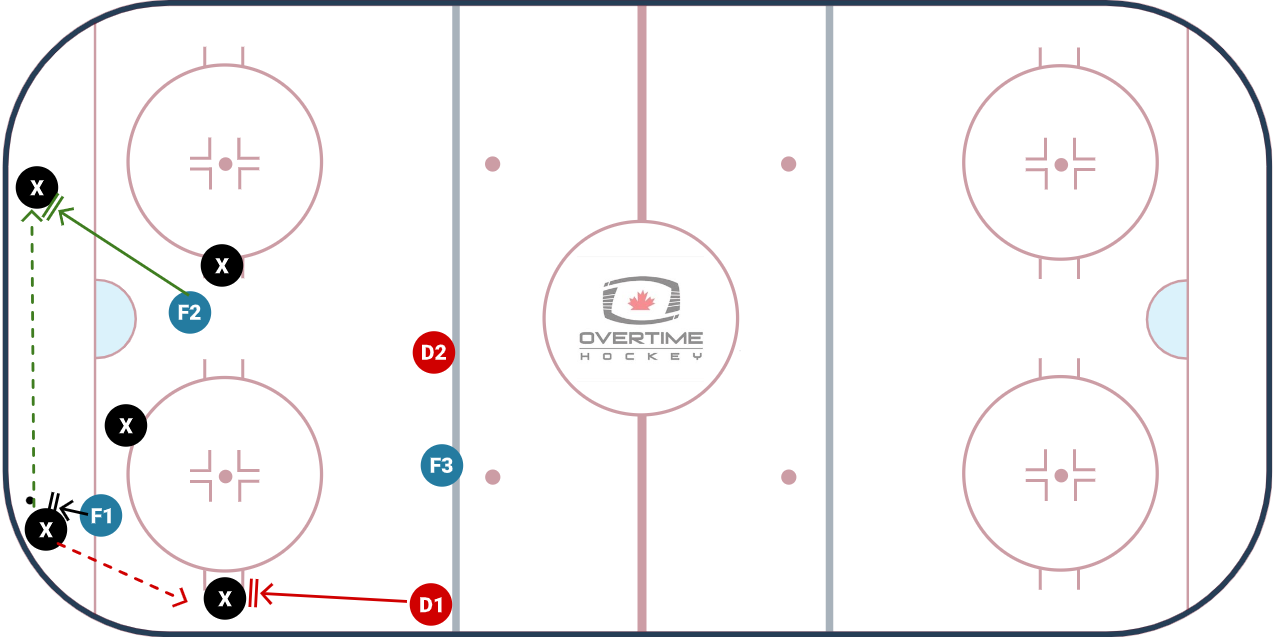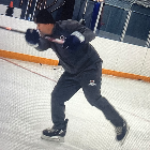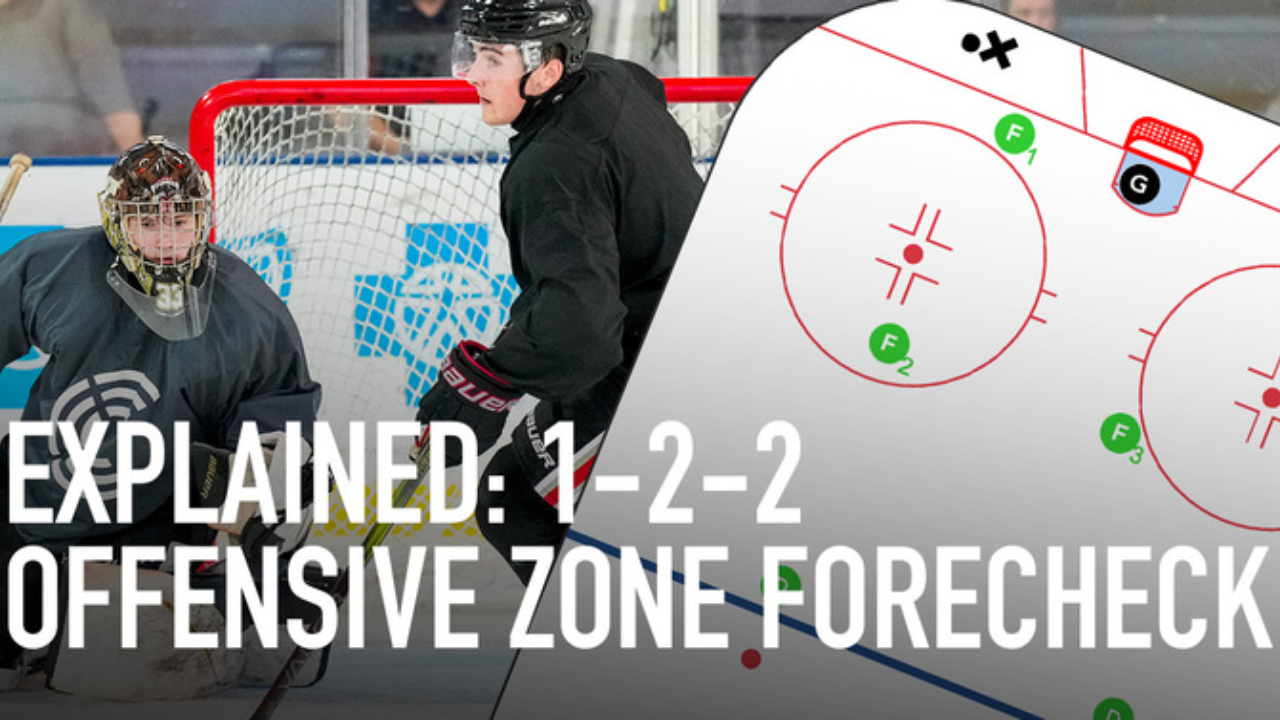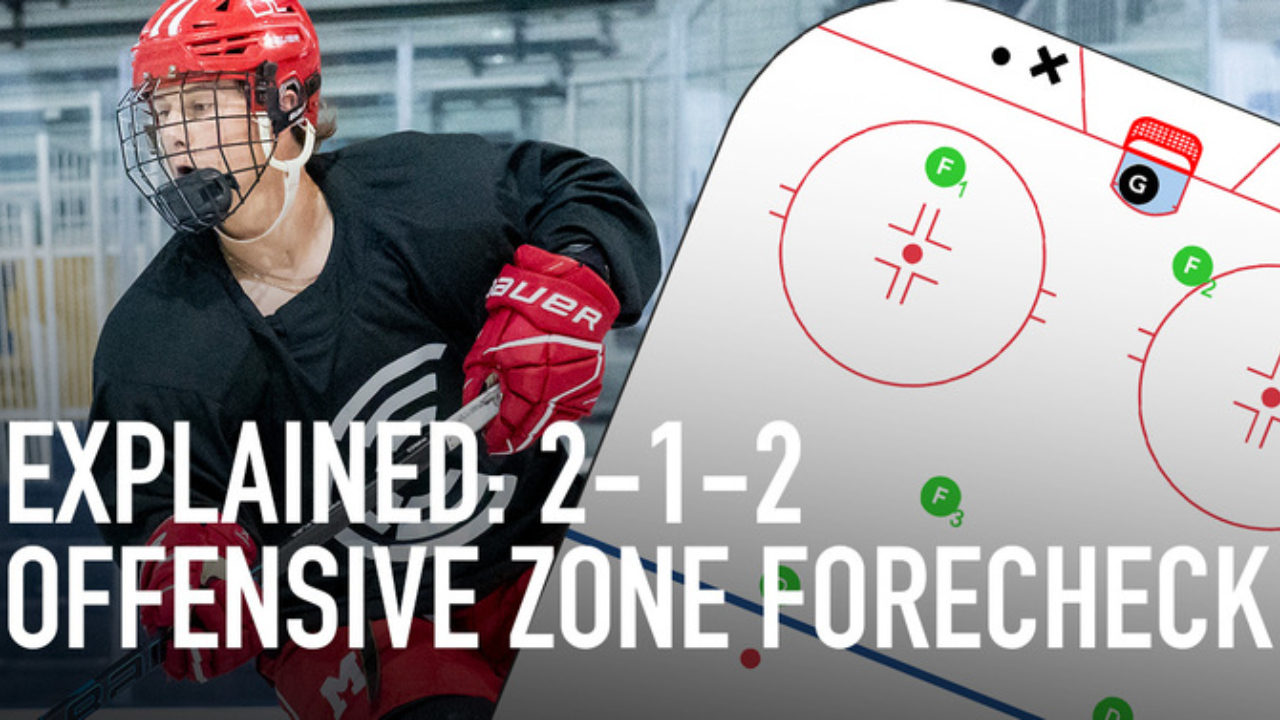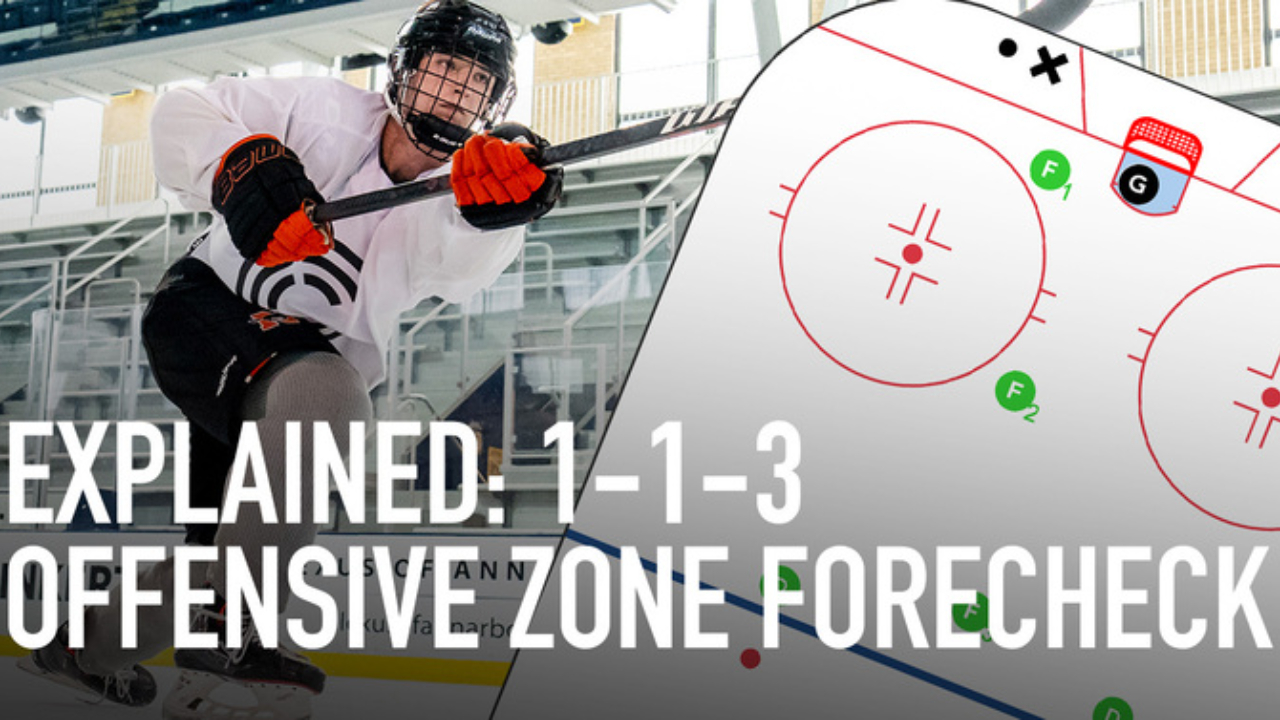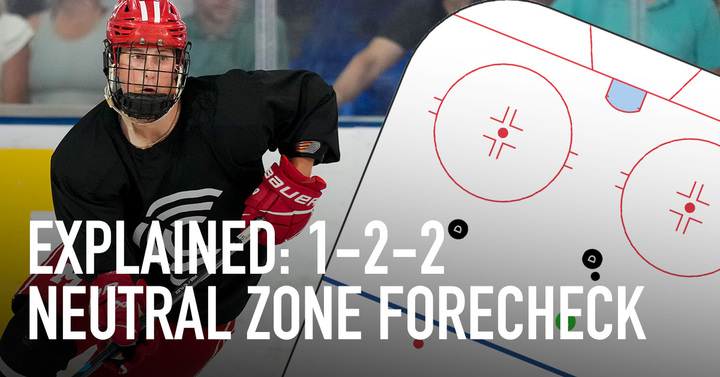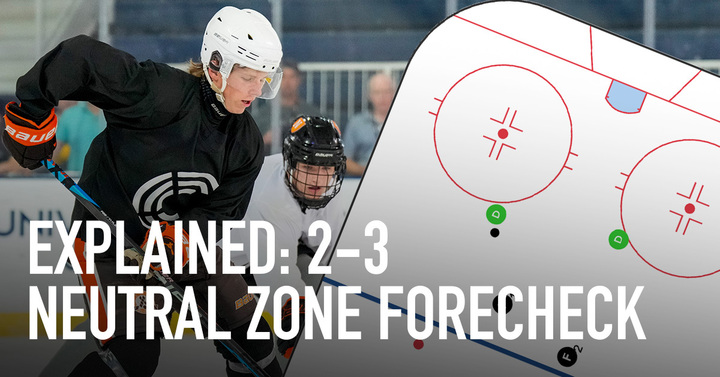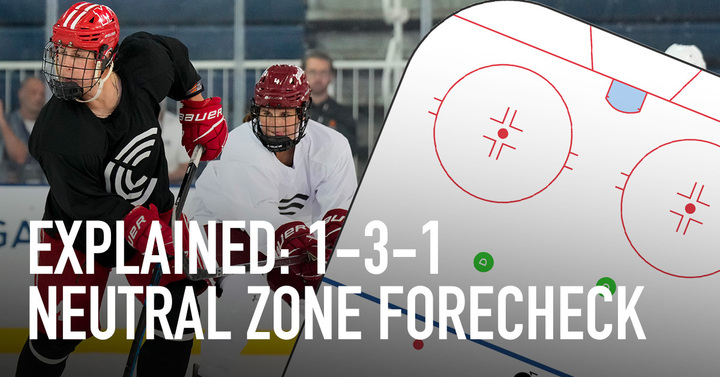
What is a 1-3-1 neutral zone forecheck?
The 1-3-1 neutral zone forecheck is a defensive-minded system that creates a web-like structure to trap opponents in the neutral zone. This system is particularly effective at disrupting controlled zone entries and forcing turnovers in the middle of the ice.
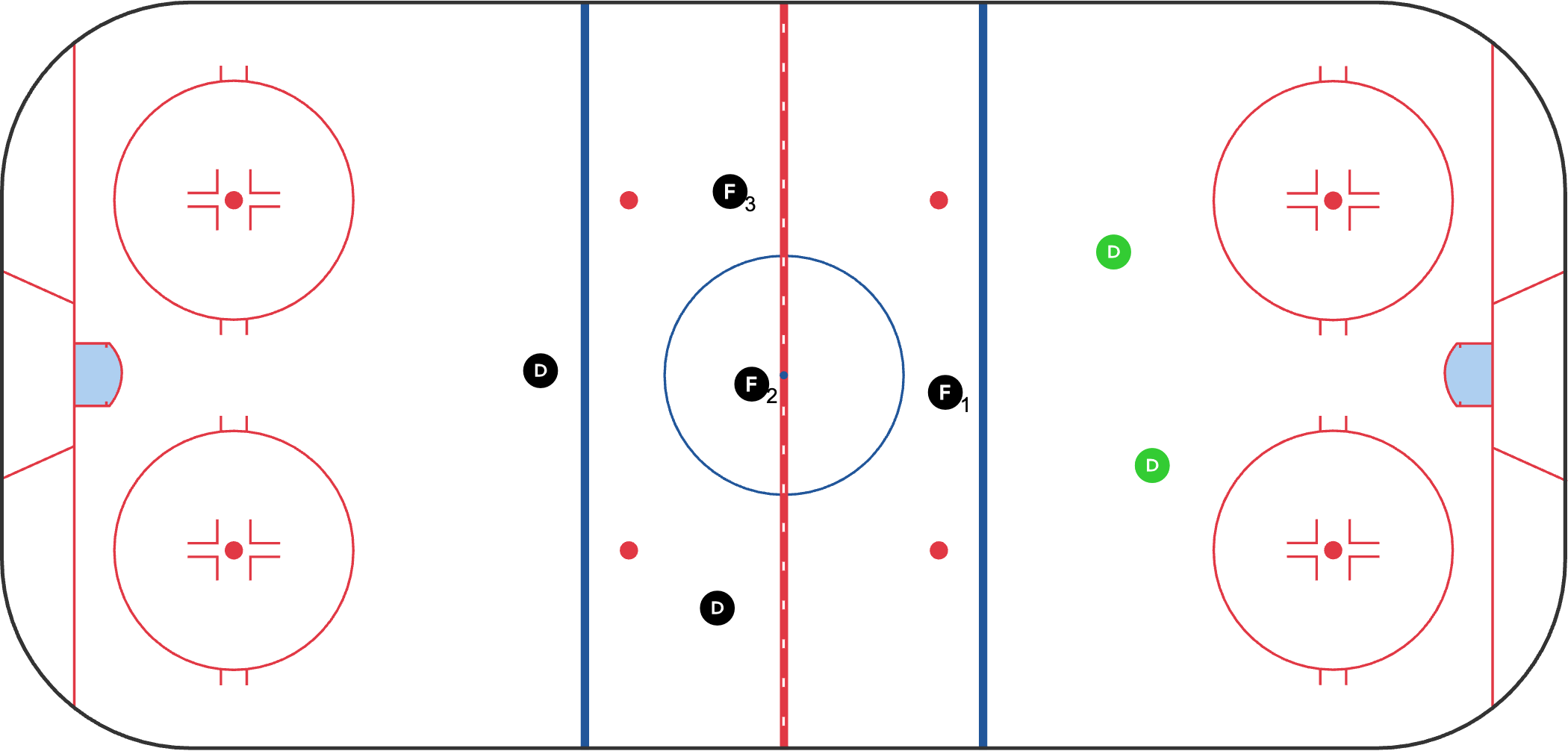
The first forward (F1) positions themselves in the middle of the ice to apply pressure on the puck carrier and force them to one side of the ice. Their primary role is not to create turnovers but to funnel the play into our trap formation.
Behind F1, three players (F2, F3, and one defenceman) form a horizontal line across the neutral zone. These players maintain tight gaps and move as a unit, shifting based on where F1 is steering the play. This middle layer is crucial - they must read the play develop and be ready to step up on dump-ins or collapse if the opposition attempts to penetrate.
Most teams will have predetermined positions for players - in this diagram, the right defenceman is lined up with F2 and F3, who are positioned in the middle and the top. F3 in this diagram is likely the left winger.
The final defender, the low defenceman, positions themselves deeper, typically around the defensive blue line. This player serves as the safety valve, protecting against any plays that might break through the middle layer. They must have excellent gap control and strong skating abilities to defend against potential odd-man situations. Their job is also to retrieve dump-ins and get the breakout started.
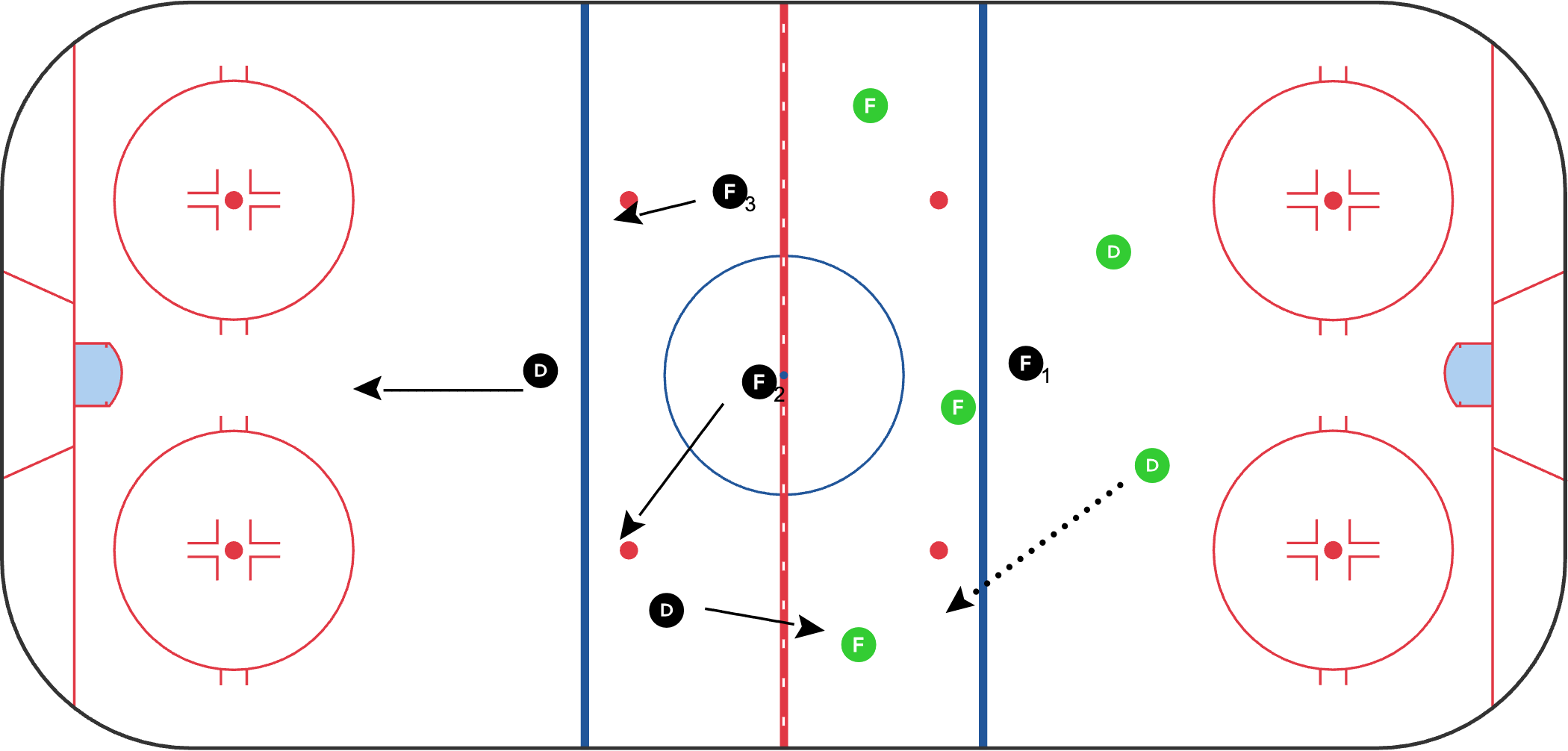
Success in the 1-3-1 relies heavily on team coordination and proper spacing between layers. When executed properly, this system forces opponents to either attempt low-percentage plays through traffic or resort to dump-ins, which our deep defender can retrieve. However, players must maintain discipline and avoid getting caught flat-footed, as skilled opponents will look to exploit any gaps in the formation.
Why It’s Effective
The 1-3-1 neutral zone forecheck is difficult to play against because:
- It creates a web-like structure that traps opponents in the neutral zone and is particularly effective at disrupting controlled zone entries
- F1 funnels the play into a trap formation rather than trying to create immediate turnovers
- The middle layer of three players (F2, F3, and one defenseman) maintains tight gaps and moves as a coordinated unit, making it hard to find passing lanes
- The deep defender (D2) acts as a safety valve against any plays that break through, with strong gap control to defend against odd-man situations
Use this forecheck to put pressure on opponents to make miraculous, low percentage plays through traffic or resort to dump-ins. As long as your team is disciplined and can run the 1-3-1 quickly and without too much thinking, then it’s effective against any style of opponent - puck-movers, puck transporters, or teams who keep it simple and chip off the boards. The best part is that you already have players up in the play, so your team’s transition game is primed and ready to attack!
Practice
Here’s a drill you can use to practice this forecheck. It starts with a faceoff win, so your players will really be primed for a game-like situation.
-
Black runs a faceoff win
-
After the faceoff play, coach blows the whistle and spots puck in neutral zone
-
Green gaps up and runs forecheck
-
Play 5on5 for 30 seconds or so afterwards
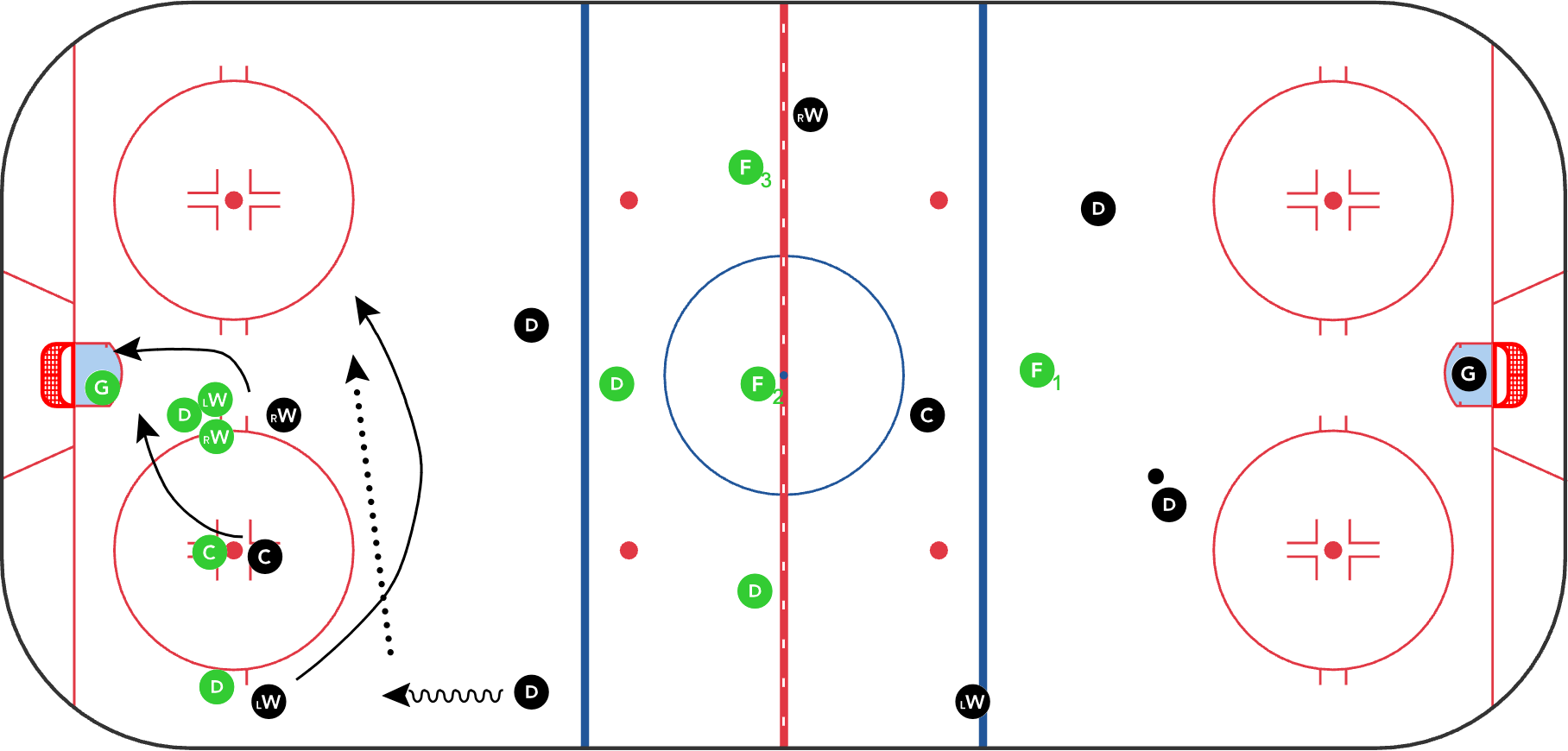
The Evidence
Not as many teams use the 1-3-1 as a few years ago, but the ones who do, like the LA Kings from 2020 - 2023, appreciate how predictable the puc carriers will be. They're comfortable with the same players, usually the right handed defencemen like Drew Doughty, retrieving the puck after a dump in and moving it north.
Get everything you need to know about neutral zone forechecks here!
Learn more about the offenzive zone forecheck too.
2-1-2 Offensive Zone Forecheck



